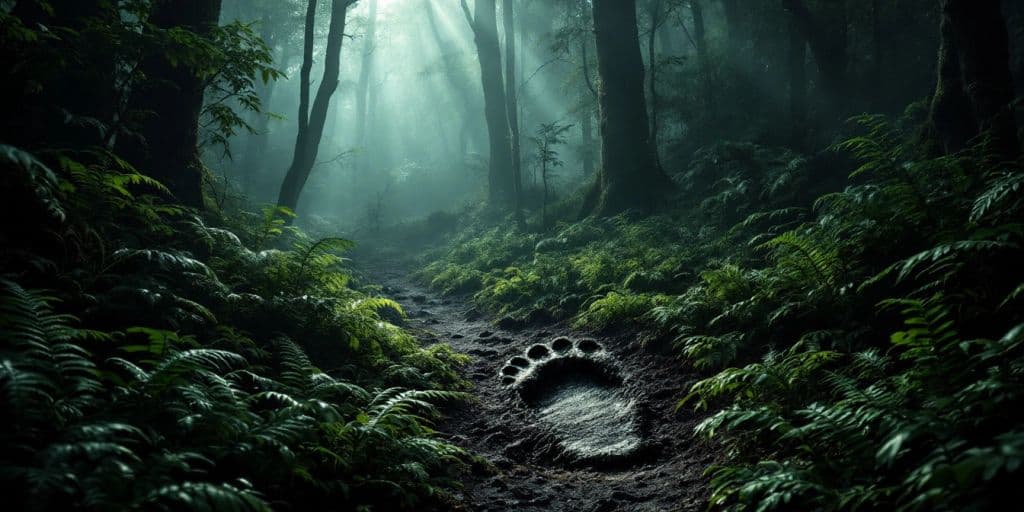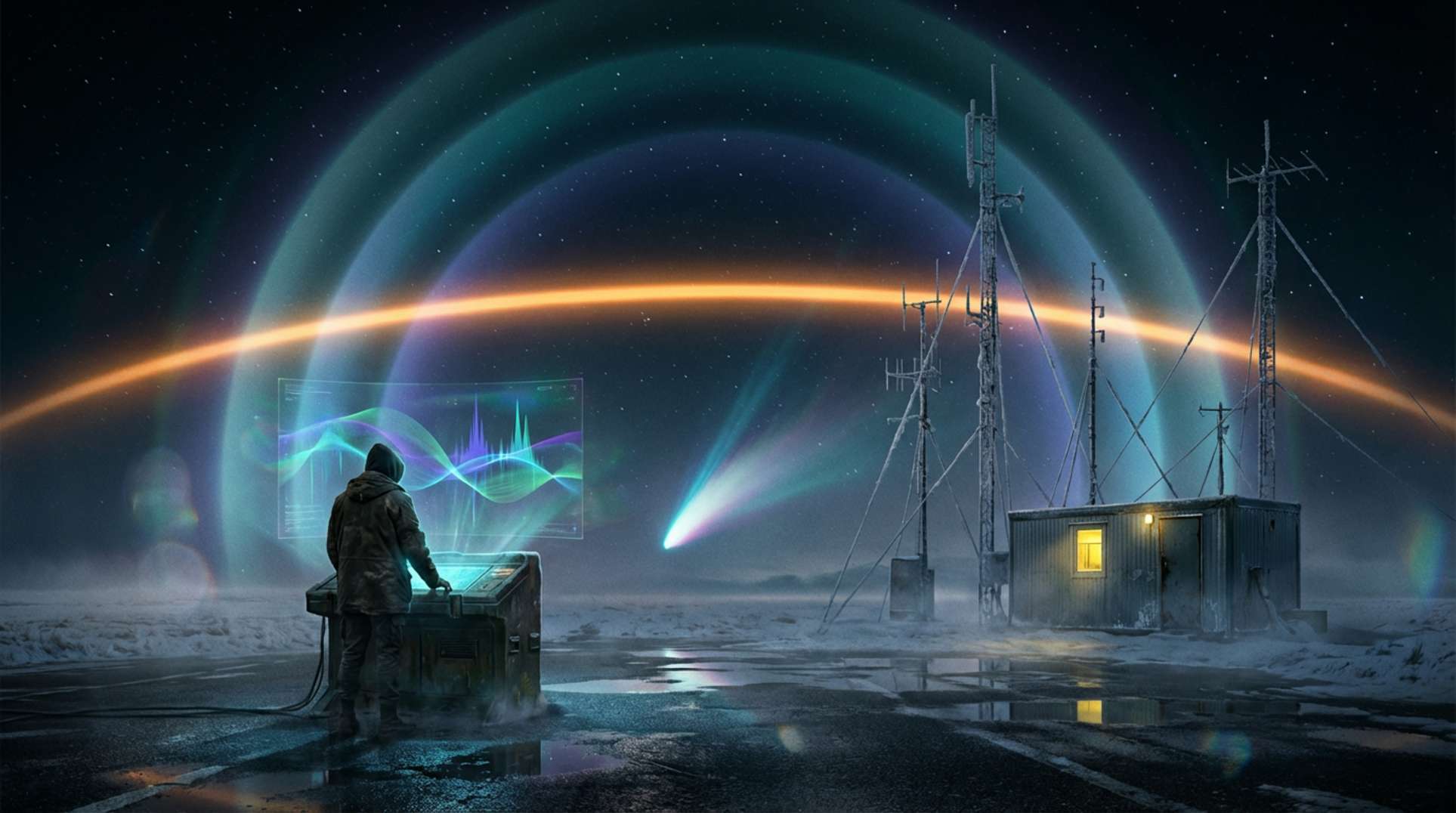Cryptozoology is the study of hidden creatures that have not been proven to exist by science. This fascinating field combines folklore, eyewitness accounts, and scientific investigation to explore the possibility of legendary animals like Bigfoot and the Loch Ness Monster. As we delve into the world of cryptids, we will uncover their origins, iconic legends, scientific approaches, and cultural significance.
Key Takeaways
- Cryptozoology investigates creatures that are rumored to exist but lack scientific proof.
- Many famous cryptids, like Bigfoot and the Loch Ness Monster, have deep roots in folklore and local legends.
- Scientific methods, including field investigations and modern technology, are used to search for evidence of cryptids.
- Cultural beliefs and local traditions play a significant role in the stories surrounding cryptids.
- Skepticism exists within the scientific community, with some viewing cryptozoology as pseudoscience.
The Origins and Evolution of Cryptozoology
Ancient Myths and Legends
The stories of fantastical creatures have been part of human culture for ages. From the gryphons of Greek myths to the shape-shifting beings in Native American tales, these legends have sparked our imaginations. Many cultures have their own versions of mysterious creatures, which often serve to explain the unknown.
The Birth of Modern Cryptozoology
The term "cryptozoology" was first used in the 1950s by Belgian zoologist Bernard Heuvelmans. He wanted to create a formal study for animals that were not yet discovered. This marked the beginning of a new field that combined science with the search for hidden creatures.
Pioneers of the Field
Several key figures helped shape cryptozoology:
- Bernard Heuvelmans: Often called the father of cryptozoology, he wrote extensively on the subject.
- Ivan T. Sanderson: A zoologist who combined biology with a passion for the unexplained.
- Loren Coleman: A researcher who has contributed significantly to the field.
The journey from myth to potential reality is what makes cryptozoology so captivating. It challenges our understanding of the natural world and keeps the spirit of discovery alive.
In summary, cryptozoology has evolved from ancient tales to a structured field of study, driven by the curiosity to uncover the mysteries of hidden creatures.
Iconic Cryptids: Legends and Sightings

Bigfoot: North America’s Elusive Giant
Bigfoot, also known as Sasquatch, is a legendary creature said to roam the forests of North America. Many Native American tribes have shared stories about this large, hairy being for centuries. Sightings are still reported today, keeping the legend alive. Here are some key points:
- The Patterson-Gimlin film from 1967 is one of the most famous pieces of evidence.
- Many scientists remain skeptical due to the lack of solid proof.
- Field investigations continue, with researchers searching for footprints and hair samples.
The Loch Ness Monster: Scotland’s Aquatic Mystery
The Loch Ness Monster, affectionately called Nessie, is said to inhabit Scotland’s Loch Ness. Reports of this creature date back to the 6th century. Here are some interesting facts:
- The famous “Surgeon’s Photo” from 1934 sparked widespread interest.
- Despite sonar readings suggesting a large creature, no definitive proof has been found.
- Some researchers believe it could be a misidentified animal or even a hoax.
Chupacabra: The Blood-Sucking Beast
The Chupacabra is a mysterious creature first reported in Puerto Rico in the 1990s. It is often described as a reptilian or canine-like beast that preys on livestock. Key details include:
- The name means "goat-sucker" in Spanish, referring to its alleged habit of draining the blood of goats.
- Sightings have spread across Latin America and into the United States.
- Many theories exist about its origins, ranging from alien encounters to genetic experiments.
Cryptids like Bigfoot and the Loch Ness Monster continue to fascinate people, blending folklore with scientific inquiry. Their stories remind us of the mysteries that still exist in our world.
Scientific Approaches in Cryptozoology
Cryptozoology is not just about chasing myths; it employs scientific methods to explore the existence of hidden creatures. This section will cover the various scientific approaches used in the field.
Field Investigations and Expeditions
Cryptozoologists often go on expeditions to gather evidence. Here are some key activities they engage in:
- Searching for physical evidence like footprints, hair, or scat.
- Documenting eyewitness accounts to create a detailed picture of sightings.
- Collaborating with local communities to gather folklore and reports.
Technological Tools and Innovations
Modern technology plays a vital role in cryptozoology. Some tools include:
- Camera traps that capture images of elusive creatures.
- Drones for aerial surveys of hard-to-reach areas.
- Thermal imaging to detect heat signatures in the dark.
Analyzing Physical Evidence
Any evidence collected is rigorously tested. This includes:
- Genetic testing to identify species.
- Comparing samples with known animals to rule out misidentifications.
- Documenting findings in scientific journals to share with the broader community.
Cryptozoology provides powerful insight; true archaeologists and cryptozoologists follow the scientific method, exposing hoaxes and interrogating theories.
Through these scientific approaches, cryptozoologists aim to bridge the gap between folklore and reality, making the search for hidden creatures a fascinating blend of science and adventure.
Cultural Impact of Cryptid Legends

Cryptids in Popular Culture
Cryptids have become a significant part of modern culture. They appear in movies, books, and TV shows, capturing the imagination of many. These stories often reflect the values and beliefs of the communities that foster them. For example, the Wendigo of Algonquin-speaking peoples serves as a cautionary tale about greed and excess.
Folklore and Local Traditions
Many cryptids are deeply rooted in local folklore. They often serve to explain natural phenomena or teach moral lessons. Here are some examples:
- Bigfoot: Represents the mystery of the wilderness.
- Chupacabra: Reflects fears about livestock and survival.
- Loch Ness Monster: Ties into Scotland’s rich history and tourism.
Psychological and Social Functions
Cryptid legends fulfill various roles in society:
- Cultural Identity: They help communities bond over shared stories.
- Explaining the Unexplained: They provide answers to mysterious events.
- Entertainment: They offer thrilling tales that captivate audiences.
The quest for cryptids is a fascinating blend of anecdotal evidence, physical clues, and modern technology. While skepticism remains, the ongoing search keeps the mystery alive and continues to captivate the imagination of many.
Controversies and Skepticism in Cryptozoology
Debunking Myths and Misidentifications
Cryptozoology often faces challenges from skeptics who argue that many cryptid sightings can be explained by common animals or hoaxes. Here are some common issues:
- Mistaken Identities: Many creatures thought to be cryptids are often just misidentified animals, like bears or large primates.
- Hoaxes: Some sightings are fabricated, leading to confusion and mistrust in the field.
- Anecdotal Evidence: Critics often label cryptozoology as pseudoscience, pointing to its reliance on anecdotal evidence and its association with sensationalized media portrayals.
The Pseudoscience Debate
The debate over whether cryptozoology is a legitimate field of study continues. Here are some key points:
- Scientific Methodology: Many argue that cryptozoologists should adopt rigorous scientific methods to gain credibility.
- Open-Mindedness: While skepticism is important, being open to new evidence is crucial for scientific progress.
- Fact vs. Fiction: Distinguishing between real research and pseudoscientific claims is essential for the integrity of the field.
Balancing Skepticism and Open-Mindedness
The quest for cryptids is a fascinating blend of anecdotal evidence, physical clues, and modern technology. While skepticism remains, the ongoing search keeps the mystery alive and continues to captivate the imagination of many.
| Evidence Type | Description | Status |
|---|---|---|
| DNA Analysis | Hair samples tested, mostly from common animals | Inconclusive |
| Footprint Evidence | Large, human-like prints, some hoaxes | Ongoing investigation |
| Audio Recordings | Strange sounds linked to Bigfoot | Needs verification |
Despite the controversies, the allure of cryptids continues to inspire both researchers and enthusiasts alike, as they seek to uncover the truth behind these mysterious creatures.
The Future of Cryptozoology
Emerging Technologies
As we look ahead, new technologies are set to revolutionize the search for cryptids. Here are some promising tools:
- Environmental DNA (eDNA) Sampling: This method involves collecting DNA from the environment, like soil or water, to identify unknown species.
- Advanced Imaging Systems: High-tech cameras with night vision can help capture elusive creatures in their natural habitats.
- Artificial Intelligence: AI can analyze large amounts of data from expeditions, helping to spot patterns that might indicate the presence of cryptids.
Potential Discoveries
The quest for hidden creatures is ongoing, and researchers are optimistic about future findings. Some areas to explore include:
- Unexplored Regions: Dense jungles and deep oceans may still hold undiscovered species.
- Lesser-Known Cryptids: Investigating creatures that haven’t received much attention could lead to exciting discoveries.
- Collaboration with Indigenous Communities: Local knowledge can provide valuable insights into sightings and legends.
Collaboration with Indigenous Communities
Working together with indigenous groups can enhance cryptozoological research. Their traditional knowledge often includes valuable information about local wildlife and legends. This partnership can lead to a deeper understanding of both the creatures and the cultures that share their stories.
The future of cryptozoology is bright, with new tools and collaborations paving the way for exciting discoveries. As we continue to explore, the line between myth and reality may become clearer, revealing the secrets of the natural world.
As we look ahead, cryptozoology is set to evolve in exciting ways. With new technologies and a growing interest in the unknown, the field is ripe for exploration. Join us on this thrilling journey and discover more about the mysteries that await. Visit our website to unlock a treasure trove of insights and resources!
Conclusion
In conclusion, the journey into cryptozoology reveals a world filled with wonder and mystery. The search for creatures like Bigfoot, the Loch Ness Monster, and others keeps our curiosity alive. While many of these beings remain unproven, the stories and legends surrounding them spark our imagination and encourage exploration. As we continue to seek answers, we must also respect the unknown and the cultures that share these tales. Whether or not these creatures exist, the quest for them reminds us of the magic still present in our world.
Frequently Asked Questions
What is cryptozoology?
Cryptozoology is the study of animals that are rumored to exist but haven’t been proven by science. This includes creatures like Bigfoot and the Loch Ness Monster.
Are cryptids real?
Many people believe in cryptids based on stories and sightings, but there is no solid scientific proof that they exist.
What methods do cryptozoologists use?
Cryptozoologists use various methods, such as field investigations, collecting evidence like footprints or hair, and using technology like cameras to search for cryptids.
Why are cryptids important to culture?
Cryptids are important because they often reflect local folklore and beliefs. They can also spark curiosity and wonder about the natural world.
What are some famous cryptids?
Some well-known cryptids include Bigfoot, the Loch Ness Monster, and the Chupacabra. Each has its own unique story and sightings.
Is cryptozoology considered a science?
Cryptozoology is often seen as a pseudoscience because it lacks rigorous scientific methods. However, it still attracts interest and curiosity from many people.




